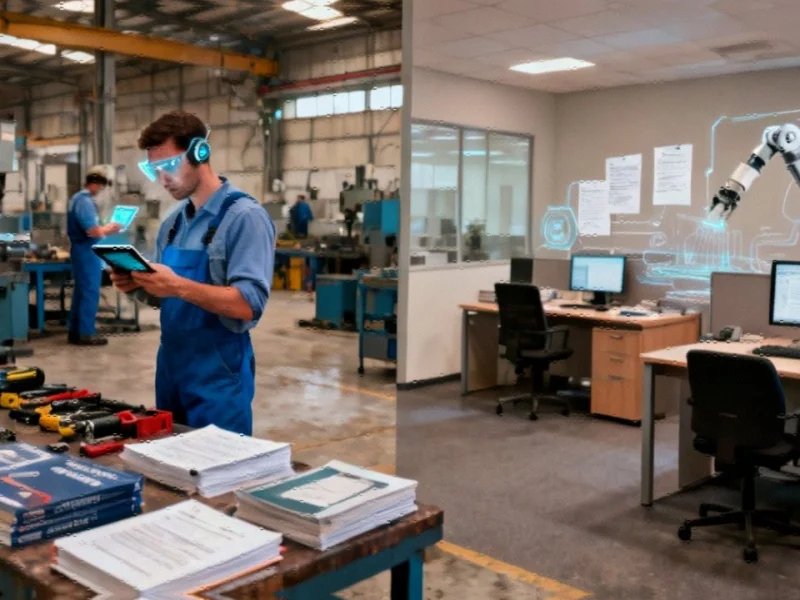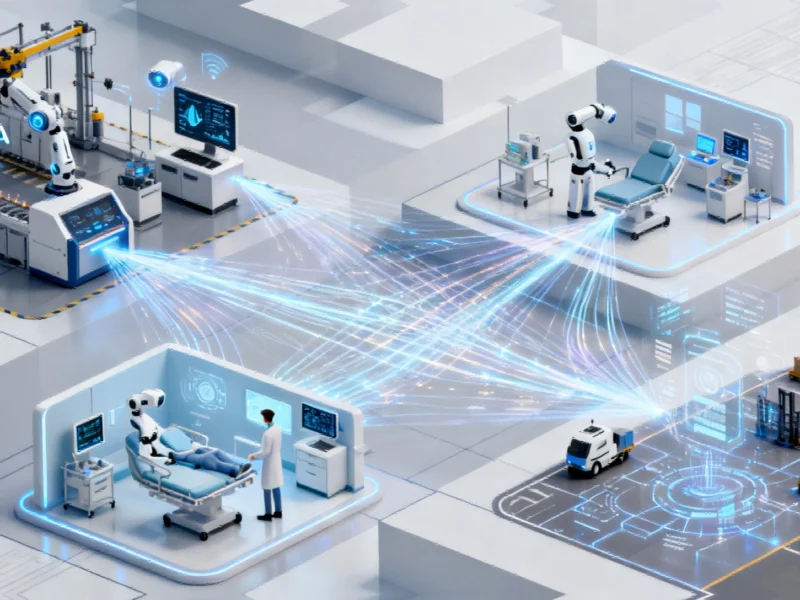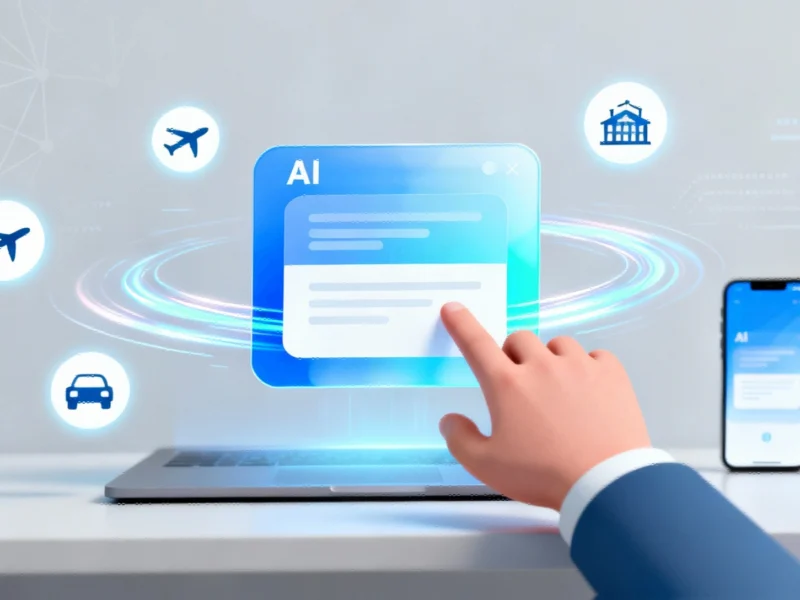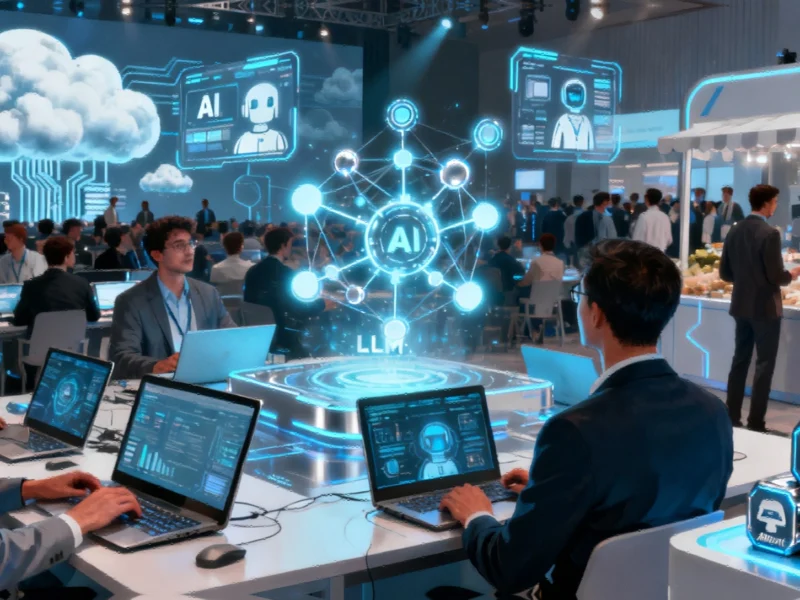Note: Featured image is for illustrative purposes only and does not represent any specific product, service, or entity mentioned in this article.
The Dual Nature of AI in Modern Workplaces
Artificial intelligence is creating a fascinating paradox in today’s workforce landscape. While concerns mount about AI’s potential impact on white-collar professions, the technology is simultaneously breathing new life into blue-collar sectors that have long struggled with knowledge gaps and skills shortages. This transformation represents one of the most significant industry developments in recent memory, challenging conventional wisdom about which jobs remain secure in an increasingly automated world.
White-Collar Anxiety Meets Blue-Collar Opportunity
The same AI capabilities that threaten to streamline administrative and entry-level knowledge work are proving revolutionary for tradespeople and industrial workers. Where junior analysts might worry about AI synthesizing reports, electricians and technicians celebrate AI systems that can instantly locate specific wiring diagrams within thousands of pages of equipment manuals. This shift in workforce dynamics reflects AI’s unique ability to democratize specialized knowledge that was previously accessible only to seasoned experts.
As detailed in this comprehensive analysis of AI’s workforce impact, the technology is creating unexpected opportunities for career advancement among workers who traditionally had limited access to institutional knowledge. The very tools that might reduce opportunities for some are creating pathways for others.
The Knowledge Democratization Revolution
Industrial settings have long suffered from what experts call the “retirement brain drain” – experienced workers taking decades of accumulated knowledge with them when they leave. AI is fundamentally changing this dynamic by capturing and organizing institutional knowledge in accessible formats. New workers can now query AI systems to understand troubleshooting procedures that previously required years of mentorship.
This knowledge democratization extends beyond simple information retrieval. AI systems can now guide workers through complex repair processes, recommend preventive maintenance schedules based on equipment performance data, and even predict potential failures before they occur. These capabilities represent some of the most exciting related innovations in industrial computing and workforce development.
Generational Shifts in Workforce Attitudes
The next generation of workers appears to be taking notice of these shifting dynamics. Enrollment in trade schools and technical programs has seen notable increases as young people recognize that AI-enhanced blue-collar roles may offer more security and advancement potential than some traditional office jobs. This represents a significant reversal of decades-old trends that pushed young talent exclusively toward four-year degrees and white-collar careers.
Meanwhile, the surveillance capabilities of AI systems continue to evolve, as evidenced by recent expansions in police surveillance networks that leverage similar underlying technologies. This parallel development highlights both the promise and potential pitfalls of AI implementation across different sectors.
Security Considerations in an AI-Enhanced Workplace
As organizations integrate AI more deeply into their operations, security remains a paramount concern. The same systems that empower workers with instant access to critical information can become vulnerabilities if not properly secured. Industry leaders are developing sophisticated approaches to these challenges, with executives detailing comprehensive AI security strategies that balance capability with protection.
This security-first mindset is particularly crucial in industrial settings where AI systems increasingly control physical machinery and safety-critical processes. The stakes extend far beyond data breaches to include potential physical harm and production disruptions.
Market Reactions and Strategic Positioning
The business world is closely watching how major technology providers navigate this new landscape. Recent market reactions to ambitious AI initiatives demonstrate both the excitement and caution surrounding these technologies. Investors appear to be taking a measured approach, rewarding practical implementations while questioning overly ambitious timelines.
This cautious optimism reflects the complex reality of AI integration – while the potential is enormous, successful implementation requires careful planning, significant investment, and thoughtful change management. Companies that navigate these waters successfully stand to gain substantial competitive advantages.
Financial Implications and Workforce Investment
The financial landscape for AI implementation continues to evolve, with interesting developments in how companies fund these transformations. Recent mobilization of legal teams in credit situations highlights the complex financial considerations surrounding technology investments. Organizations must balance the need to modernize with fiscal responsibility, particularly when implementing technologies that transform their workforce capabilities.
The Path Forward: Balanced Integration
The most successful organizations appear to be those taking a balanced approach to AI integration – one that enhances human capabilities rather than simply replacing them. In blue-collar settings, this means using AI to augment workers’ skills and knowledge rather than eliminating positions. In white-collar environments, it involves focusing AI on routine tasks while developing human workers for more complex, strategic roles.
This balanced approach recognizes that AI’s greatest value may lie in its ability to complement human intelligence rather than substitute for it. The most effective implementations create symbiotic relationships between human workers and AI systems, leveraging the strengths of both to achieve results neither could accomplish alone.
As these market trends continue to evolve, one thing becomes increasingly clear: the future of work won’t be about humans versus machines, but rather about how effectively we can integrate these powerful technologies to create more capable, efficient, and rewarding work environments across all sectors of the economy.
This article aggregates information from publicly available sources. All trademarks and copyrights belong to their respective owners.



